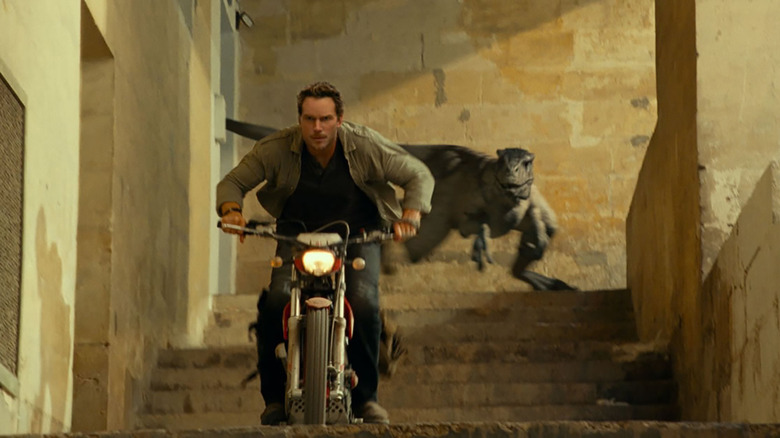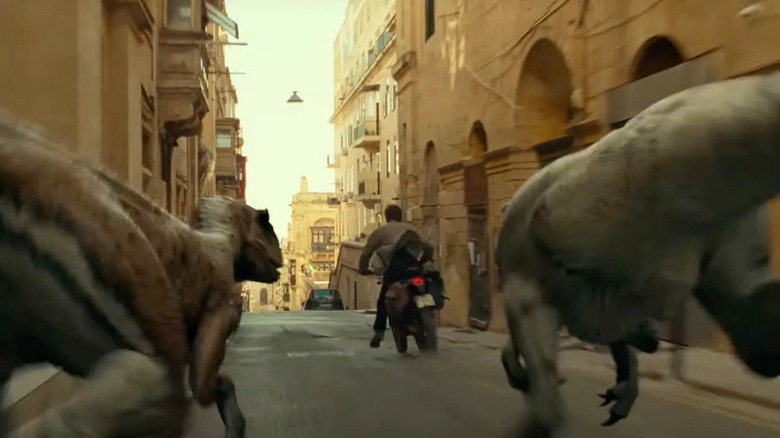Jurassic World Dominion's Biggest Challenge For Its Chase Sequence Had Nothing To Do With Dinosaurs
The "Jurassic Park" films have been a consistent showcase of how practical and digital effects can work together in perfect harmony to transport audiences into the fantastical worlds of living dinosaurs. The first film was a groundbreaking demonstration of dinosaurs walking, roaring, and wreaking havoc across Isla Nublar, but five movies later, the dinosaur action has been kicked up a few notches. "Jurassic Park III" has a talking raptor hallucination, the Indoraptor stalks a girl like a got dang serial killer in "Jurassic World: Fallen Kingdom," the Pterosaur attack in "Jurassic World" is one of the most violent moments of the last decade, and now we've got full on chase sequences in the streets of Malta in "Jurassic World Dominion."
Dinosaurs, man. They're running wild!
Bringing these dinos to life is no easy task, and /Film's own Bill Bria was able to chat with "Jurassic World Dominion" VFX supervisor David Vickery to learn just what it takes to turn creatures that have been extinct for millions of years into present day movie marvels. Bria asked Vickery about that specific Malta chase scene, and as it turns out, putting dinosaurs in the scene wasn't even close to being the most difficult part of making it happen. In true "Jurassic Park" style, the bigger problem was man-made. The principal cast of Bryce Dallas Howard, DeWanda Wise, and Chris Pratt never went to Malta, so it was up to the VFX team to not only figure out how to make dinosaurs look real in the streets, but also look like they were chasing people who were never there.
The magic of blue screens
"Everything that they shot for that sequence was done in the U.K.," Vickery tells us. "We built massive sets in the U.K., but we also had a blue screen studio, with Chris [Pratt] on a rolling road." The rolling road was a massive treadmill roughly 20 feet long and 15 feet wide, that he would ride along on his character's trademark motorbike. He was safely secured to the rolling road through a fixed arm, which allowed him to ride the bike as well as steer left and right without risk of bodily injury. "He was actually on a moving stationary motorcycle, but you really got the sense that he was riding that bike," Vickery continues.
While they were shooting everything in the U.K., huge swaths of Malta's capital city, Valletta, were first scanned using a LIDAR scanner and then filmed. "We ran array vehicles with multiple cameras down every single street that we traveled so that we could rebuild all of the city streets that Chris was traveling along, to sort of insert him back into the Maltese photography," says Vickery.
Not having the humans there on set makes things doubly difficult, because there are so many tiny elements that have to be included to give the scene a realistic look. Matching the sunlight, figuring out where to include kicked up dust from the wheels, and the addition of digital vehicles to give the impression of obstacles were all added to craft a bit of movie magic.

